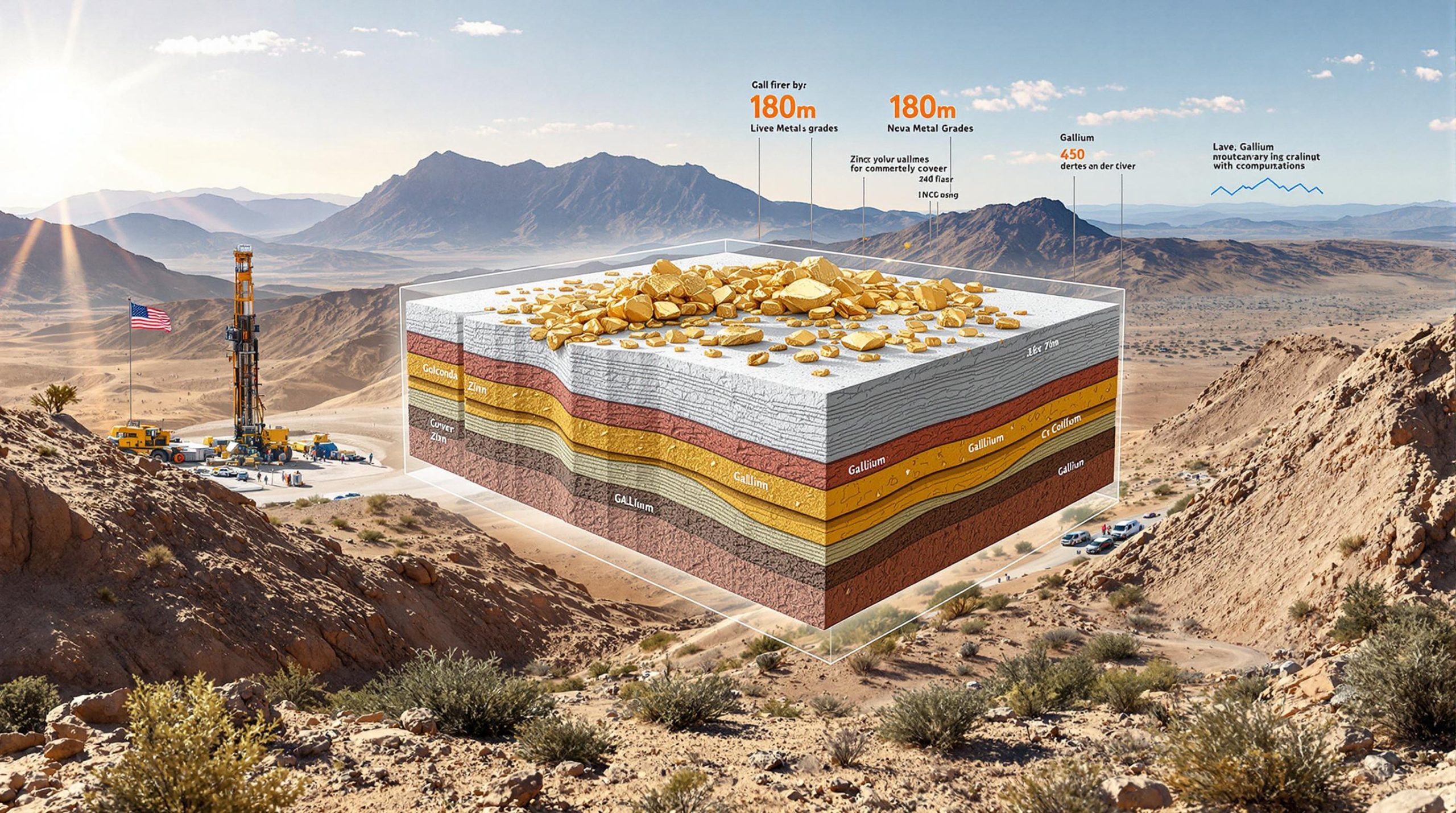The Current State of Battery-Grade Nickel Sulphate Prices
The battery-grade nickel sulphate market is experiencing a period of price stability amid complex supply and demand dynamics. According to the latest Shanghai Metal Market (SMM) data, the battery-grade nickel sulphate index currently stands at 27,200 yuan per metric ton as of June 24, 2025, with market quotations ranging between 27,200-27,600 yuan/mt. Most notably, prices have remained stable week-over-week despite underlying market tensions.
Latest Price Indices and Quotations
Battery-grade nickel sulphate, a critical component in lithium-ion battery cathode materials, has maintained its price equilibrium despite significant external pressures. The narrow trading range of 400 yuan/mt suggests a temporary market equilibrium between competing forces of cost reduction and supply-side resistance.
The SMM battery-grade nickel sulphate index serves as the industry benchmark, reflecting spot market transactions and producer quotations across China's battery materials supply chain. This stability occurs despite turbulence in upstream raw material markets, indicating complex cross-commodity interactions influencing price formation.
Regional Price Variations
Chinese domestic battery-grade nickel sulphate prices continue to set global benchmarks due to China's dominance in battery material processing. The price differential between high-purity battery-grade and standard industrial-grade nickel sulphate typically ranges between 3,000-5,000 yuan/mt, reflecting the stringent impurity controls and consistency requirements for battery applications.
Market Insight: Price premiums for battery-grade specifications become increasingly important as EV manufacturers demand higher energy density and longer cycle life from their battery systems. The ultra-low impurity profiles required for advanced NCM811 cathode materials command additional processing premiums.
While the SMM index reflects mainland China pricing, international arbitrage opportunities remain limited due to logistical constraints and strict qualification requirements from battery cell manufacturers.
How Production Costs Are Affecting Nickel Sulphate Pricing
Battery-grade nickel sulphate pricing is experiencing downward cost pressures from upstream raw materials, particularly as LME nickel prices continue their decline. This cost reduction stems from a complex geopolitical situation affecting the entire battery materials supply chain.
Raw Material Cost Dynamics
The extension of the DRC cobalt export ban has created a ripple effect throughout the battery materials ecosystem. According to SMM analysis, "The extension of the cobalt ban in the DRC has suppressed demand for nickel in ternary materials, which drove LME nickel prices to continue to decline."
This causal chain illustrates the interconnected nature of battery material markets:
- DRC cobalt export restrictions
- Reduced ternary (NCM/NCA) cathode material production
- Decreased nickel demand for battery applications
- Lower LME nickel prices
- Reduced production costs for nickel sulphate
The cost structure for battery-grade nickel sulphate varies significantly depending on production pathway:
| Production Pathway | Approx. Cost Share | Environmental Impact | Market Share |
|---|---|---|---|
| HPAL (High-Pressure Acid Leaching) | 65-75% raw materials | Higher | Growing |
| Matte conversion | 70-80% raw materials | Medium | Dominant |
| Recycling | 50-60% collection/processing | Lower | Emerging |
Supply Chain Disruptions
The DRC cobalt ban extension represents one of the most significant supply chain disruptions affecting the nickel sulphate market in 2025. While primarily targeting cobalt exports, this policy has created downstream effects that directly impact nickel demand patterns and pricing.
Production cost advantages currently favor integrated producers with access to captive nickel sources, particularly those utilizing converted nickel matte or mixed hydroxide precipitate (MHP) from Indonesia. These producers can maintain healthier margins during price fluctuations compared to those relying on market-priced raw materials.
Industry Perspective: The nickel sulphate market is increasingly segmenting between commodity-grade producers serving general industrial applications and premium battery-grade specialists focused on the high-specification EV supply chain. This bifurcation is expected to increase as battery chemistries evolve toward higher nickel content.
Supply-Side Factors Influencing the Market
The battery-grade nickel sulphate market is experiencing significant supply-side dynamics that directly impact pricing strategies and market stability. Producer behavior reflects strategic responses to changing market conditions.
Producer Pricing Strategies
Recent market observations reveal increasing price resistance among nickel sulphate smelters. According to SMM analysis, "The extension of the cobalt ban has fueled the reluctance to budge on prices among some nickel salt smelters." Some producers have even ceased providing quotations entirely, indicating a strategic pause to reassess market conditions.
This price resistance occurs despite downward cost pressures, suggesting:
- Producers may be operating near breakeven margins
- Strategic inventory management to prevent further price erosion
- Anticipation of demand recovery in the medium term
- Protection of contracted price floors with key customers
The suspension of quotations by some smelters indicates potential inventory adjustments or capacity utilization strategies to support price levels. This behavior typically occurs when producers prefer to temporarily reduce output rather than accept lower market prices.
Production Capacity Utilization
Battery-grade nickel sulphate production capacity utilization rates remain a critical market indicator. Current operating rates at major facilities appear sufficient to meet present demand levels while maintaining price stability.
Capacity utilization fluctuations directly impact available supply and producer pricing power:
- Facilities operating at >85% utilization typically maintain pricing discipline
- Operations below 70% capacity often face pressure to accept lower prices
- Temporary shutdowns and maintenance schedules can create short-term price supports
China's domestic nickel sulphate capacity expansion continues despite present demand challenges, with major producers betting on future demand growth driven by EV battery production expansion. This capacity growth may limit future price increases once demand recovers.
How Demand Is Affecting Battery-Grade Nickel Sulphate Prices
The demand side of the battery-grade nickel sulphate market presents a mixed picture, with important implications for price formation and market stability.
Battery Materials Sector Demand
Current demand patterns show divergent behaviors among precursor manufacturers. According to SMM, "Some precursor manufacturers raised price acceptance for nickel salts," indicating selective procurement by certain market participants. However, this positive signal is tempered by the observation that "most adopted a wait-and-see approach" amid market uncertainty.
This bifurcated demand response reveals several important market dynamics:
- Strategic inventory positioning by different precursor manufacturers
- Varying production schedules based on downstream battery orders
- Selective purchasing based on specific cathode chemistry requirements
- Risk management approaches to raw material procurement
The overall assessment that "downstream demand remains relatively weak" suggests that despite isolated instances of increased buying interest, the broader battery materials supply chain is experiencing cautious procurement behavior.
Market Sentiment Analysis
The current market exhibits a notable disconnect between sentiment and fundamental demand indicators. SMM analysis notes that "sentiment is expected to drive nickel salt prices higher," but simultaneously acknowledges that weak downstream demand will "limit the extent" of any potential increases.
This sentiment-fundamentals divergence creates market uncertainty through:
- Short-term price volatility driven by trader positioning rather than actual consumption
- Speculative inventory building at perceived price floors
- Hesitancy among end-users to lock in long-term supply agreements
- Producer reluctance to offer significant price concessions despite demand weakness
Market Insight: The psychological aspects of commodity markets often create short-term price movements that diverge from underlying supply-demand fundamentals. In the battery materials space, this is amplified by the strategic importance of securing future supply chains for EV production.
Key Market Indicators to Watch
For battery-grade nickel sulphate market participants, several critical indicators deserve close monitoring to anticipate price movements and market trends.
Technical Price Analysis
The battery-grade nickel sulphate market displays important technical price patterns that provide insights into potential future movements:
- Current price level (27,200 yuan/mt) represents a significant technical support zone
- The premium of nickel sulphate over LME nickel prices serves as a key indicator of battery-specific demand
- Price stability within the 27,000-28,000 yuan/mt range suggests a temporary equilibrium
- The narrow trading range (400 yuan/mt) indicates low volatility despite market uncertainties
Historical price correlation patterns show that battery-grade nickel sulphate typically maintains a premium of 15-25% over equivalent nickel metal content, reflecting processing costs and battery-specific purity requirements. Deviations from this premium range often signal changing market dynamics.
Inventory Monitoring
Inventory levels throughout the battery-grade nickel sulphate supply chain provide crucial insights into market balance and price direction:
- Producer inventories: Increasing stocks often precede price weakness
- Consumer inventories: Low levels may indicate potential buying pressure
- Days-of-supply metrics: Optimal levels are typically 20-30 days for precursor manufacturers
- Geographical distribution: Regional inventory imbalances can create arbitrage opportunities
The current market appears to be maintaining adequate inventory levels throughout the supply chain, contributing to price stability despite underlying demand weakness. This suggests that supply and demand forces, while not perfectly balanced, are not creating significant pressure in either direction.
Market Outlook for Battery-Grade Nickel Sulphate
The battery-grade nickel sulphate market faces complex and sometimes contradictory forces that will shape its trajectory in both the short and long term.
Short-Term Price Projections
In the immediate term, the market appears caught between sentiment-driven optimism and fundamental demand constraints. According to SMM analysis, "Sentiment is expected to drive nickel salt prices higher," but weak downstream demand will "limit the extent" of any increases.
This outlook suggests several potential scenarios:
- Base case: Prices remain within 5% of current levels (25,800-28,500 yuan/mt) through Q3 2025 as opposing forces maintain equilibrium
- Bullish case: Sentiment-driven increases push prices toward 30,000 yuan/mt if downstream demand shows unexpected improvement
- Bearish case: Further deterioration in EV production forecasts could test support at 25,000 yuan/mt
The ceiling on price increases appears firmly established by persistent weak downstream demand from the battery sector. Without substantial improvement in EV production rates, significant upside potential remains limited despite potential sentiment-driven rallies.
Long-Term Market Trends
The longer-term outlook for battery-grade nickel sulphate depends heavily on structural factors shaping the battery materials ecosystem:
- Battery chemistry evolution: The continuing shift toward higher nickel content in NCM/NCA cathodes (811, 9.5.5) supports long-term demand growth
- Production capacity expansion: Indonesia-based HPAL projects continue to add significant new capacity through 2026
- Sustainability initiatives: Carbon footprint considerations increasingly favor production methods with lower environmental impacts
Industry Perspective: The long-term fundamentals for battery-grade nickel sulphate remain positive despite short-term demand challenges. The inexorable shift toward electrification in transportation will continue driving structural demand growth for high-purity nickel compounds.
How Nickel Sulphate Fits Into the Broader Battery Materials Market
Battery-grade nickel sulphate plays a crucial role within the broader battery materials ecosystem, with important relationships to other key components and supply chain dynamics.
Comparative Performance Against Other Battery Materials
When analyzing battery-grade nickel sulphate within the context of other battery materials, several important comparisons emerge:
- Price volatility: Nickel sulphate typically exhibits lower price volatility than cobalt sulphate but higher than lithium compounds
- Cost impact: On a per-kWh basis, nickel represents approximately 8-12% of a typical NMC battery's material cost
- Substitution dynamics: Efforts to reduce cobalt content in cathodes have increased nickel's importance in the battery metals outlook
The relative performance of nickel sulphate prices affects cathode manufacturers' material selection decisions, particularly for price-sensitive applications. As battery makers continue pursuing cost reductions, the nickel content optimization represents a key focus area.
Integration With the EV Supply Chain
Battery-grade nickel sulphate's integration within the electric vehicle supply chain continues to evolve:
- Qualification timelines: New nickel sulphate sources typically require 12-18 months of testing before acceptance by tier-one cathode manufacturers
- Regional supply development: China maintains dominance in nickel sulphate refining, but Indonesia is rapidly expanding its processing capacity
- Strategic sourcing: Major automotive OEMs increasingly secure direct supply agreements to ensure battery-grade nickel availability
This integration highlights the strategic importance of battery-grade nickel sulphate within the broader EV supply chain, particularly as automakers accelerate electrification plans despite short-term market challenges.
FAQ: Battery-Grade Nickel Sulphate Market
What factors determine battery-grade versus industrial-grade classification?
Battery-grade nickel sulphate must meet stringent specifications that directly impact battery performance and safety:
- Purity requirements: Minimum 99.9% nickel sulphate hexahydrate (NiSO₄·6H₂O)
- Metal impurity limits: Strict thresholds for iron (<10ppm), copper (<5ppm), zinc (<5ppm), and cobalt (<10ppm)
- Consistency specifications: Uniform crystal size distribution and moisture content control
- Certification process: Regular testing and validation against cathode manufacturer requirements
These specifications are substantially more demanding than industrial-grade material used in electroplating and other applications, which typically accepts higher impurity levels and greater batch-to-batch variation.
How do production methods affect nickel sulphate pricing?
The production pathway significantly impacts both cost structure and pricing for battery-grade nickel sulphate:
- HPAL (High-Pressure Acid Leaching): Capital-intensive but enables direct processing of laterite ores; typically higher production costs but growing in importance
- Nickel matte conversion: Traditional pathway with established cost structure; dependent on nickel market prices
- Recycling: Emerging pathway with improving economics; currently limited by battery collection infrastructure
Technical Insight: Production method directly affects product characteristics beyond just cost. HPAL-derived nickel sulphate often contains different trace element profiles compared to matte-derived material, potentially affecting downstream battery performance.
Environmental considerations increasingly influence production method selection, with carbon footprint emerging as a key factor in procurement decisions by sustainability-focused battery and automotive manufacturers.
What role does nickel sulphate play in different battery chemistries?
Nickel sulphate serves as the primary nickel source for various lithium-ion battery cathode chemistries:
-
NMC (Lithium Nickel Manganese Cobalt Oxide):
- NMC 532: ~50% nickel content
- NMC 622: ~60% nickel content
- NMC 811: ~80% nickel content
- NMC 9.5.5: ~90% nickel content (emerging)
-
NCA (Lithium Nickel Cobalt Aluminum Oxide):
- Traditional: ~80% nickel content
- Advanced: ~90% nickel content
The trend toward higher nickel content cathodes is driven by energy density improvements, with each 10% increase in nickel content typically enabling 5-7% higher energy density. This shift supports longer EV ranges but places greater emphasis on nickel sulphate purity requirements.
How do government policies influence the nickel sulphate market?
Government policies affect the battery-grade nickel sulphate market through multiple mechanisms:
- Critical mineral strategies: Designations of nickel as a strategic/critical mineral (US, EU, Japan) impact investment and trade patterns
- Environmental regulations: Carbon border adjustment mechanisms and emissions standards influence production method selection
- Trade policies: Export restrictions (Indonesia's ore export ban) and import tariffs reshape global supply chains
- EV incentives: Purchase subsidies and manufacturing support indirectly drive nickel sulphate demand through battery production
The recent energy transition dynamics and mining industry evolution demonstrate how policy decisions in one mineral market can create unexpected ripple effects across the broader battery materials ecosystem, including nickel sulphate pricing.
Furthermore, recent battery recycling breakthrough technologies are beginning to influence the long-term outlook for nickel sulphate, as recycled materials could potentially provide a significant alternative supply source in the coming years.
Disclaimer: This market analysis is based on data available as of June 24, 2025, and represents current market conditions that may change rapidly due to unforeseen events. Price projections and market outlooks should be considered indicative rather than definitive. Readers should consult their own financial and procurement advisors before making commercial decisions based on this information.
Ready to Capitalise on the Next Major Mineral Discovery?
Discover how to spot significant ASX mineral opportunities before the broader market with real-time alerts powered by Discovery Alert's proprietary Discovery IQ model, turning complex mining data into actionable insights. Explore why historic discoveries generate substantial returns by visiting Discovery Alert's dedicated discoveries page and begin your 30-day free trial today.




